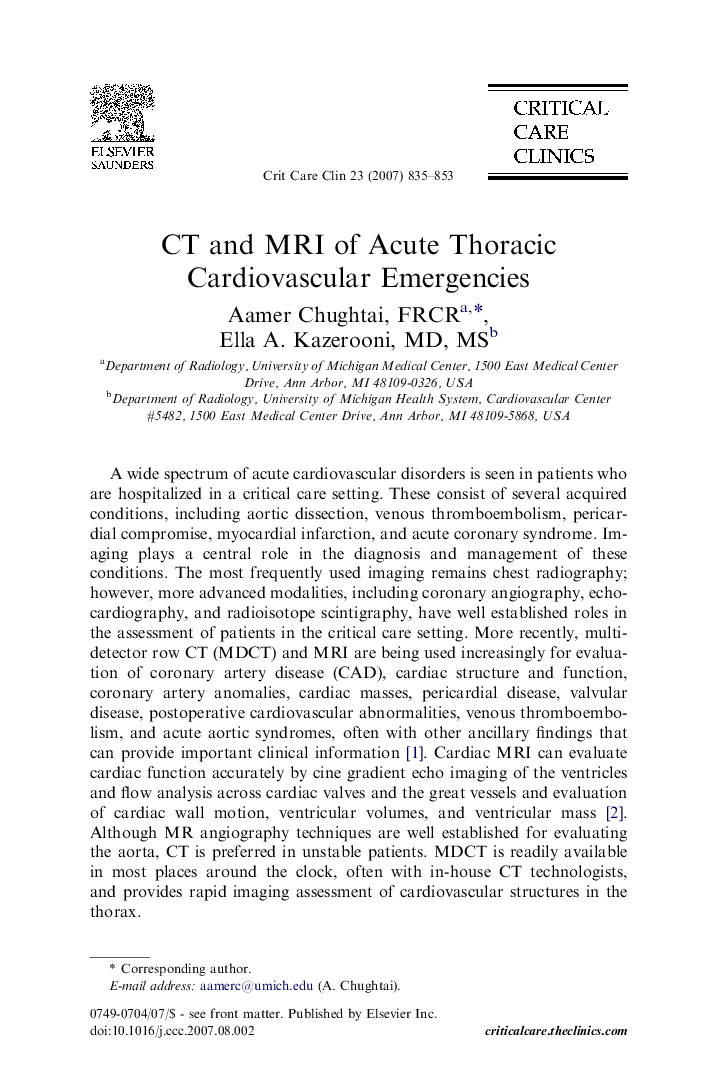| Article ID | Journal | Published Year | Pages | File Type |
|---|---|---|---|---|
| 3108853 | Critical Care Clinics | 2007 | 19 Pages |
Abstract
A wide spectrum of acute cardiovascular disorders is seen in patients who are hospitalized in a critical care setting. Imaging plays a central role in the diagnosis and management of these conditions. The most frequently used imaging remains chest radiography; however, more advanced modalities, including coronary angiography, echocardiography, and radioisotope scintigraphy, have well established roles in the assessment of patients in the critical care setting. More recently, multidetector row CT (MDCT) and MRI are being used increasingly for evaluation of coronary artery disease, cardiac structure and function, coronary artery anomalies, cardiac masses, pericardial disease, valvular disease, postoperative cardiovascular abnormalities, venous thromboembolism and acute aortic syndromes, often with other ancillary findings that can provide important clinical information. The three most common life-threatening cardiovascular processes in which advanced imaging plays a role, particularly CT, are discussed, including pulmonary embolism, aortic dissection, and coronary artery disease.
Related Topics
Health Sciences
Medicine and Dentistry
Critical Care and Intensive Care Medicine
Authors
Aamer FRCR, Ella A. MD, MS,
